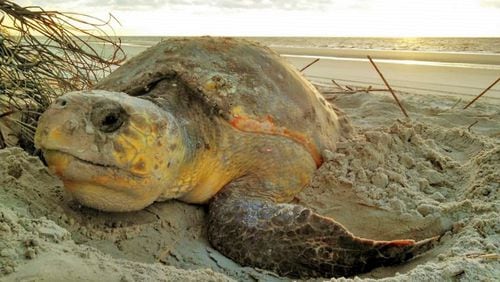Only a few decades ago, two of Georgia’s most iconic wild creatures, the bald eagle and the loggerhead sea turtle, were struggling to survive.
Now, because of exhaustive efforts to help them recover, the two species are rebounding at rates that give hope for their existence long into the future.
At least 68 of Georgia’s 159 counties now harbor bald eagles. That’s an amazing comeback since the birds had virtually disappeared from the state in 1970. Habitat loss, air and water pollution and heavy use of the egg-shell-thinning pesticide DDT were blamed for the eagles’ downfall.
They began their slow recovery with a ban on DDT use in 1972, the enactments of the Clean Air and Clean Water acts and programs under the federal Endangered Species Act to protect and restore eagle habitat.
The result: State Department of Natural Resources wildlife specialists this year documented a record 218 occupied eagle nests in Georgia — the third straight year that more than 200 active nests have been found in the state.
Last year’s nesting season netted about 240 baby eaglets. This year’s total is still being tallied.
There’s similar good news about loggerhead sea turtles, a species on the Endangered Species List. Georgia had a record 3,289 loggerhead nests last year, shattering the former record of 2,335 in 2015. The 2016 season also came in above the 2,800 mark that had been established as a recovery benchmark for the species.
DNR biologists don’t expect another record this year, but they believe the nest total still will be above average.
Beginning in early May, loggerheads crawl from the ocean onto barrier island beaches, dig holes in soft sand and lay their eggs, usually at night. The season runs through August. So far this season, 365 nests have been found along the coast.
The eggs hatch after about 60 days. Hatchlings dig their way out of the nest at night and immediately crawl toward the ocean.
IN THE SKY: From David Dundee, Tellus Science Museum astronomer: The moon will be full on Friday. Mercury and Venus are low in the east just before sunrise. Jupiter is high in the east at dusk and will appear near the moon tonight. Saturn rises out of the east at sunset and will appear near the moon on Friday night.
About the Author






